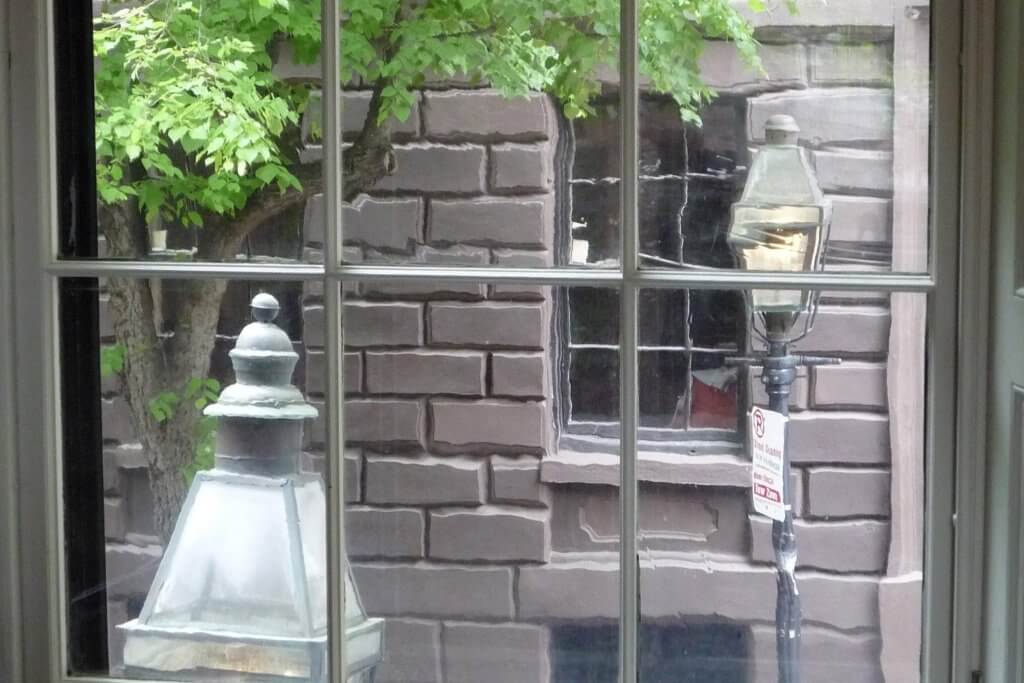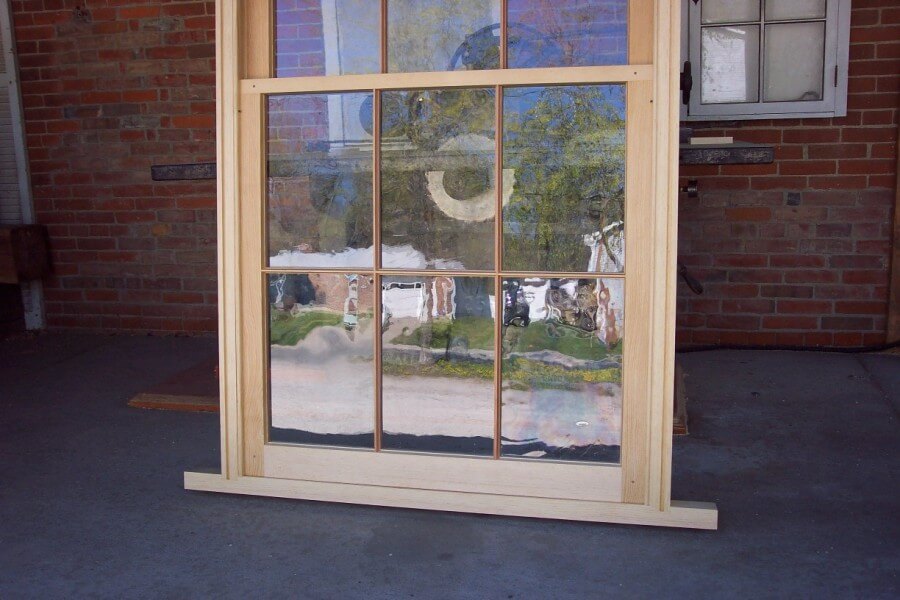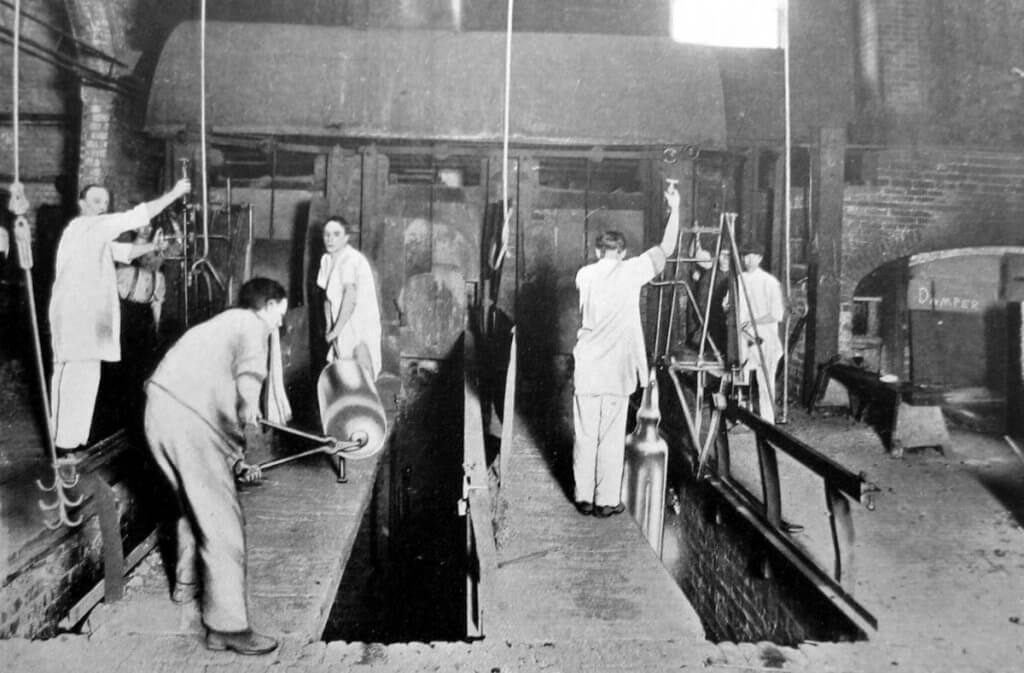Historical Glass
Drawn Glass
Drawn glass was first produced in the early 20th Century, so it’s suitable for British period properties dating from 1915 to around 1950. Even beyond the Victorian era, the age of a property determines the most authentic glass type to use in replacement glazing. Drawn glass is made using the Fourcault principle, developed in the early 1900s in Belgium by Emile Fourcault. It uses a vertical ‘draw’, aided by gravity, to form the glass.
The process involves glass being drawn directly from the tank at the working end of the furnace. A boat-shaped slotted block, made of refractory material, is pushed down into the molten glass. As the hot extruded glass rises through the slot, it is grasped by an iron bait.

Cylinder Glass
It’s ideal for properties which have a Georgian and early Victorian style. This type of glass is the most difficult to date, as both drawn glass and crown glass (made by blowing a spherical opening one end and spinning it flat) were made alongside each other for a considerable time. Cylinder glass dominated until the late 1700s, after which it was pushed out of the market by drawn glass.




